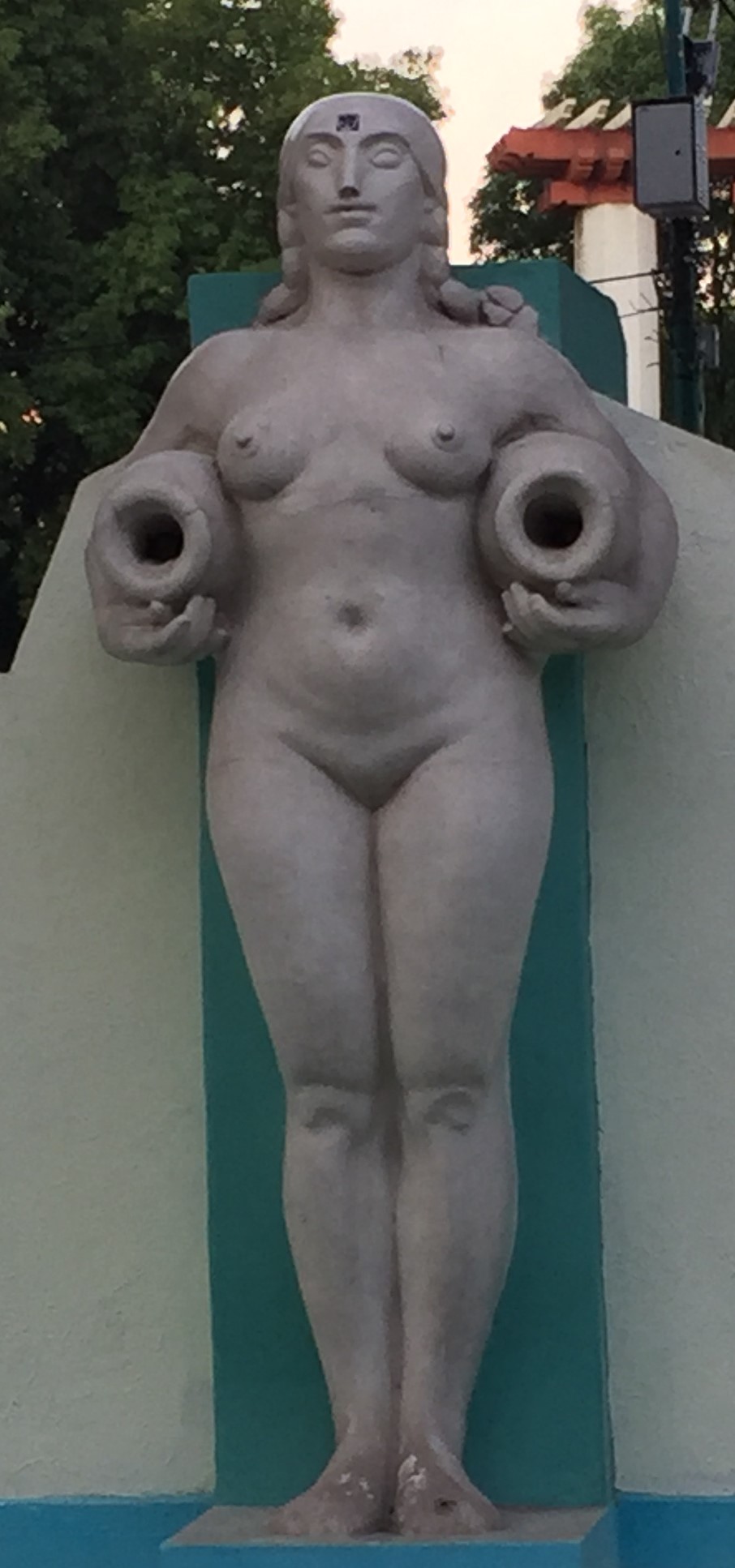Fuente De Los Cántaros on:
[Wikipedia]
[Google]
[Amazon]
 ''Fuente de los Cántaros'' is an outdoor fountain and sculpture of an indigenous woman in
''Fuente de los Cántaros'' is an outdoor fountain and sculpture of an indigenous woman in
 ''Fuente de los Cántaros'' is an outdoor fountain and sculpture of an indigenous woman in
''Fuente de los Cántaros'' is an outdoor fountain and sculpture of an indigenous woman in Mexico City
Mexico City ( es, link=no, Ciudad de México, ; abbr.: CDMX; Nahuatl: ''Altepetl Mexico'') is the capital and largest city of Mexico, and the most populous city in North America. One of the world's alpha cities, it is located in the Valley o ...
's Parque México
The Parque México ( en, lit. "Mexico Park"), officially Parque San Martín, is a large urban park located in Colonia Hipódromo in the Condesa area of Mexico City. It is recognized by its Art Deco architecture and decor as well as being one of t ...
, in Mexico, created by José María Hernández Urbina in 1927, and restored in 2008.
Description and history
The fountain was created byJosé María Hernández Urbina
José is a predominantly Spanish and Portuguese form of the given name Joseph. While spelled alike, this name is pronounced differently in each language: Spanish ; Portuguese (or ).
In French, the name ''José'', pronounced , is an old vernacul ...
, with Luz Jiménez, an indigenous Nahua woman, as the model, in 1927. The statue, 3 m in height and constructed from concrete, depicts a naked woman with a water pitcher under each arm, from which the water flowed. Locally she is referred to as ''La Muñeca'' or the ''Mujer de los Cántaros''. The fountain faces onto Calle de Michoacán, which divides the park, at the entrance to the Teatro al Aire Libre Lindbergh (Lindbergh Forum, named for Charles Lindbergh
Charles Augustus Lindbergh (February 4, 1902 – August 26, 1974) was an American aviator, military officer, author, inventor, and activist. On May 20–21, 1927, Lindbergh made the first nonstop flight from New York City to Paris, a distance o ...
). Urbina, together with the architect Roberto Montenegro was one of the creators of the Forum, with its Art Deco
Art Deco, short for the French ''Arts Décoratifs'', and sometimes just called Deco, is a style of visual arts, architecture, and product design, that first appeared in France in the 1910s (just before World War I), and flourished in the Unite ...
features, in the 1920s, at the time that Colonia Condesa
Condesa or La Condesa is an area in the Cuauhtémoc Borough of Mexico City, south of Zona Rosa and 4 to 5 km west of the Zócalo, the city's main square. It is immediately west of Colonia Roma, together with which it is designated as ...
was being developed. The statue has come to symbolize the Mexican people (''Mexicayotl'' or ''Mexicanidad
Mexicayotl (Nahuatl word meaning "Essence of the Mexican", "Mexicanity"; Spanish: ''Mexicanidad''; see '' -yotl'') is a movement reviving the indigenous religion, philosophy and traditions of ancient Mexico (Aztec religion and Aztec philosophy) a ...
'') before The Conquest. The Forum was poorly maintained, and fell into disrepair, but in 2008 a restoration began at a cost of 21 million pesos over 17 months, but was considered controversial by local residents. The fountain is considered an important landmark and attracts many visitors.
In popular culture
The statue has become symbolised in stencil graffiti on the walls of Mexico City, and has been replicated in fibreglass for a film and is a frequent subject for artists.See also
*1927 in art
Events from the year 1927 in art.
Events
* May – Stanley Spencer moves to Burghclere (England) to work on the Sandham Memorial Chapel.
* May 16 – A pair of oval rooms built at the Musée de l'Orangerie in Paris as a permanent home for eigh ...
Notes
References
Bibliography
* * * * * * * * *External links
* {{Public art in Mexico City 1927 establishments in Mexico 1927 sculptures Concrete sculptures Condesa Fountains in Mexico Indigenous peoples in Mexico City Nude sculptures Outdoor sculptures in Mexico City Sculptures of women in Mexico Statues in Mexico City